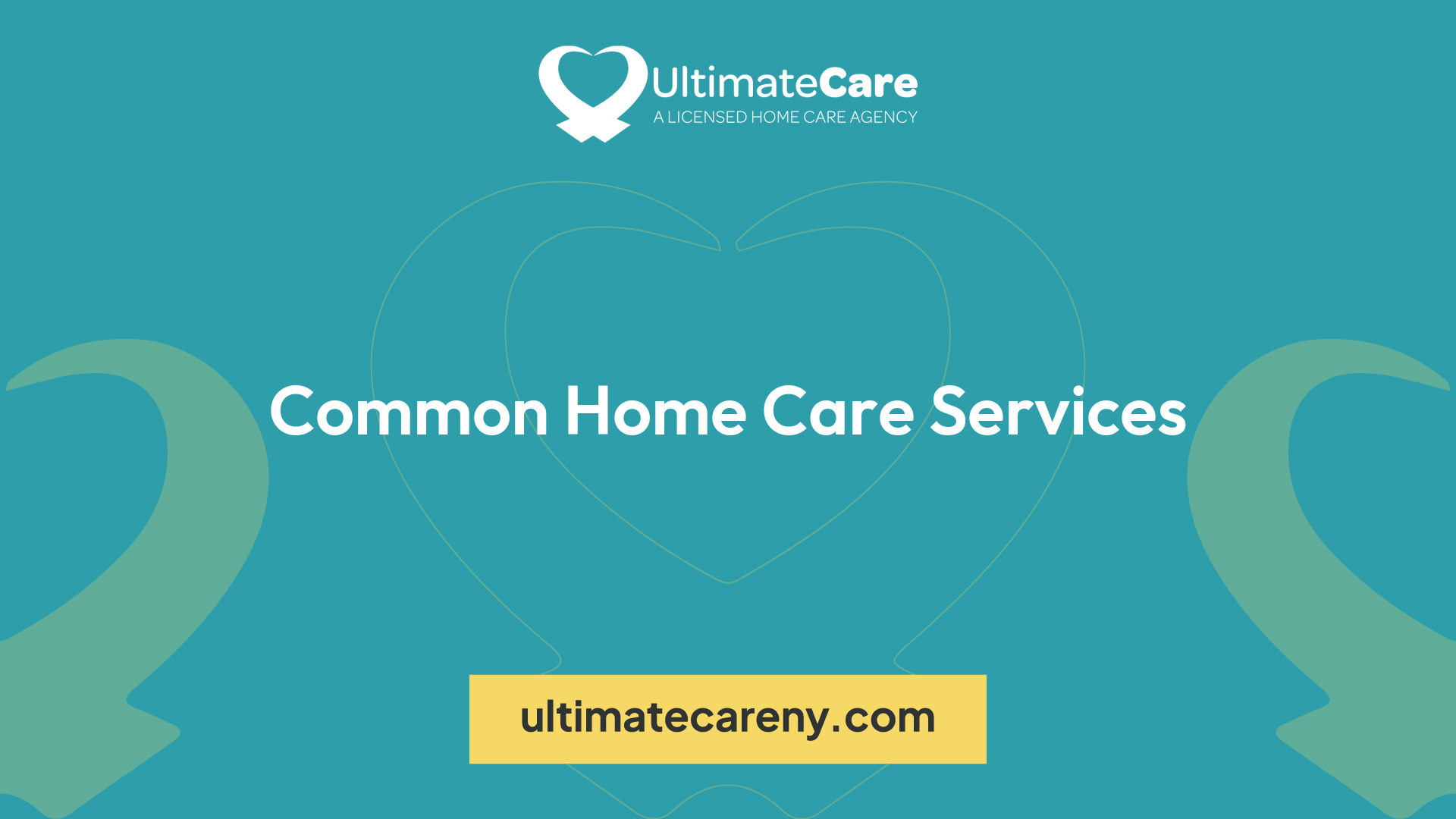Home Care Delivered
Unlock the potential of home care delivered. Elevate your lifestyle with smart technology and remote monitoring in healthcare.
The information provided in this article is for educational purposes only. If you have medical questions or concerns, please contact a qualified health care professional.
Before beginning any new exercise program, it's essential to seek advice from your healthcare provider to ensure it's safe and appropriate for your individual health condition and fitness level.
Home Health Care Overview
Home health care services play a vital role in providing healthcare to individuals in the comfort of their own homes. These services encompass a wide range of medical, therapeutic, and supportive care options, allowing patients to receive the care they need without the need for hospitalization or facility-based treatment.

Types of Home Health Care Services
According to Johns Hopkins Medicine, the types of home health care services available are diverse and comprehensive. They include:
Type of Service Description
- Doctor Care: Medical care provided by doctors in the patient's home.
- Nursing Care: Skilled nursing services, including wound care, medication management, and monitoring of vital signs.
- Therapy Services: Physical, occupational, and speech therapy to help patients regain or improve their functional abilities.
- Medical Social Services: Assistance with social and emotional concerns, including counseling and connecting patients with community resources.
- Home Health Aide Care: Basic assistance with activities of daily living, such as bathing, grooming, and dressing.
- Homemaker or Basic Assistance Care: Help with household chores, meal preparation, and other basic needs.
- Companionship: Providing social interaction and emotional support to patients.
- Volunteer Care: Assistance from trained volunteers for companionship or respite care.
- Nutritional Support: Evaluation and guidance for proper nutrition and meal planning.
- Laboratory and X-ray Imaging: Convenient in-home testing and imaging services.
- Pharmaceutical Services: Delivery of medications and support for medication management.
- Transportation: Assistance with transportation to medical appointments and other necessary outings.
- Home-Delivered Meals: Provision of nutritious meals to patients who require dietary support.
These services are tailored to meet the specific needs of each patient, ensuring that they receive comprehensive and personalized care in the comfort of their own homes.
Smart Technology in Home Health Care
The integration of smart technology in home health care has revolutionized the way healthcare is delivered. Smart wearables, such as smartwatches and fitness trackers, have become increasingly popular for monitoring various health factors, including heart rate, blood oxygen levels, and irregular heartbeat detection. This remote monitoring of patients' health extends beyond traditional healthcare, becoming a part of everyday life for many individuals.
Smart technology has also made significant advancements in specific healthcare areas. For instance, connected inhalers have emerged as a powerful tool in managing respiratory conditions. These devices help patients track their inhaler usage and provide reminders for taking medication, ensuring adherence to a healthy schedule. Studies indicate that with smart technology monitoring like connected inhalers, up to 66% of asthma deaths could have been prevented.
By leveraging smart technology, healthcare providers can remotely monitor patients' health, enhance communication, and provide timely interventions. This not only improves patient outcomes but also empowers individuals to take an active role in managing their own health.
In summary, home health care services encompass a wide range of medical, therapeutic, and supportive care options. The integration of smart technology further enhances the delivery of home health care, allowing for remote monitoring and empowering patients to actively participate in their own care. With these advancements, individuals can receive high-quality healthcare in the comfort and familiarity of their own homes.
Remote Monitoring and Smart Devices
Advancements in technology have revolutionized the healthcare industry, allowing for remote monitoring of patients' health and the use of smart devices. This section will explore the benefits of remote monitoring and the role of connected inhalers in healthcare.
Benefits of Remote Monitoring
Remote monitoring of patients' healthcare is a growing trend that extends beyond traditional healthcare and into mainstream culture. Smartwatches and fitness trackers have become commonplace, enabling individuals to monitor various health factors such as heart rate, blood oxygen levels, irregular heartbeat detection, and more [1].
The benefits of remote monitoring are significant. It allows healthcare providers to continuously monitor patients' health data, enabling early detection of potential issues and intervention. This proactive approach can lead to improved patient outcomes and reduced hospital readmissions. Remote monitoring also empowers individuals to take charge of their own health, promoting self-care and awareness.
Connected Inhalers in Healthcare
Connected inhalers are a prime example of smart technology in healthcare that can save lives and improve patient outcomes. These devices help patients track their inhaler usage, reminding them when to take a dosage to maintain a healthy schedule. According to Impact MyBiz, 66% of asthma deaths could have been prevented with smart technology monitoring, such as connected inhalers.
By providing real-time data on inhaler usage, these devices enable healthcare professionals to assess medication adherence and identify potential issues. They can also help patients better understand their condition and improve their management of asthma or other respiratory conditions.
Connected inhalers not only benefit patients but also enhance communication between patients and healthcare providers. The data collected by these devices can be shared with healthcare professionals, allowing for more informed discussions and personalized treatment plans.
Incorporating smart devices and remote monitoring into healthcare practices opens up new possibilities for delivering effective and personalized care. As technology continues to advance, the integration of these innovations will likely become more prevalent, revolutionizing the way healthcare is delivered and improving patient outcomes.
Telehealth and Telemedicine
In recent years, telehealth and telemedicine have emerged as valuable tools in healthcare delivery, offering patients convenient access to medical care from the comfort of their own homes. This section explores the patient satisfaction with telehealth and the advantages of telemedicine appointments.
Patient Satisfaction with Telehealth
Telehealth services have been well-received by patients, with up to 78% reporting satisfaction with their telehealth experiences. The convenience and accessibility of virtual visits have played a significant role in patient satisfaction [1]. By eliminating the need to travel to the doctor's office and wait in a waiting room, telehealth allows patients to fit appointments into their busy schedules without taking time off work or arranging for childcare.
Furthermore, telemedicine appointments have become increasingly popular, especially during the COVID-19 pandemic. These virtual appointments offer a safe and convenient alternative to in-person visits, reducing the risk of exposure to infectious diseases like COVID-19 and improving overall patient safety.
Advantages of Telemedicine Appointments
Telemedicine appointments provide numerous advantages for both patients and healthcare practitioners. Some key benefits include:
- Convenience: Telemedicine appointments eliminate the need for patients to travel, wait in a waiting room, and spend additional time for in-person visits. Patients can consult with their healthcare provider from the comfort of their own homes, saving time and reducing the hassle associated with traditional appointments.
- Improved Access: Telemedicine expands access to healthcare services, especially for individuals living in rural or remote areas. It allows patients to connect with healthcare professionals without the limitations of geographic proximity, ensuring access to specialized care that may not be readily available locally.
- Control of Infectious Diseases: Telemedicine appointments play a crucial role in controlling the spread of infectious diseases like COVID-19 and the flu. By allowing doctors to prescreen patients remotely, telemedicine helps prevent the transmission of diseases in waiting rooms and provides better protection for vulnerable individuals, such as the chronically ill, pregnant women, the elderly, and the immunocompromised [2].
- Comprehensive Evaluation: Telemedicine enables specialty practitioners to assess patients in their home environment. This approach allows for a more comprehensive evaluation, as allergists can identify allergy triggers in the home setting, neurologists can observe patients' conditions at home, and mental health assessments can be conducted in a more familiar environment. By integrating the patient's surroundings into the evaluation, telemedicine offers a holistic approach to care [2].
With the advantages of telehealth and telemedicine becoming increasingly evident, it's no surprise that both patients and healthcare practitioners are embracing these virtual healthcare options. As technology continues to advance and healthcare delivery evolves, telemedicine will likely continue to play a significant role in providing accessible and convenient healthcare services to patients around the world.
Challenges in Healthcare Delivery
Providing quality healthcare is not without its challenges. In this section, we will explore two key challenges faced in healthcare delivery: staffing shortages in health systems and interoperability issues in healthcare.
Staffing Shortages in Health Systems
Staffing shortages continue to be a pressing concern for health systems, with CEOs of US hospitals ranking it as their top concern in 2021, surpassing financial challenges for the first time since 2004. The shortage of healthcare professionals, particularly nurses, is expected to intensify through at least 2023, with a global shortage of 13 million nurses predicted by 2030.
Several factors contribute to staffing challenges. The ongoing pandemic has caused increased burnout among healthcare workers, leading some to leave the profession or reduce their work hours. Additionally, the aging workforce in healthcare poses a challenge as retirements outpace new entrants into the field. These staffing shortages can strain the healthcare system, impacting patient care and access to services.
Interoperability Issues in Healthcare
Interoperability, or the ability of different healthcare systems and software to exchange and use information effectively, remains a significant challenge in healthcare. Despite advancements in technology, at least 70% of US healthcare providers still rely on fax machines to exchange medical information due to a lack of interoperability in Electronic Health Records (EHRs) [3]. This reliance on outdated methods limits the efficient sharing of vital patient data and the use of clinical decision support tools.
Data silos and incomplete integration within systems hinder the seamless flow of information between healthcare providers, leading to inefficiencies and potential errors in patient care. Greater interoperability is needed to ensure that healthcare professionals have access to accurate and complete patient information, enabling them to make well-informed decisions and provide optimal care.
Addressing these challenges in healthcare delivery requires strategic planning and collaboration among stakeholders. Efforts to attract and retain healthcare professionals, improve work environments, and invest in training and education are essential for mitigating staffing shortages. Similarly, promoting interoperability by implementing standardized data exchange protocols and fostering collaboration between healthcare organizations and technology vendors can help overcome interoperability issues and improve the quality of care provided to patients.
Emerging Trends in Healthcare
The field of healthcare is constantly evolving, with breakthroughs in medical science and efforts to address healthcare inequities. These emerging trends have the potential to transform the way healthcare is delivered and improve patient outcomes.
Breakthroughs in Medical Science
Breakthroughs in digital medicine, gene therapy, nanomedicine, and mRNA research are occurring at an unprecedented rate, surpassing the ability of hospitals to keep up. Advancements in these areas have the potential to revolutionize diagnostics, treatment, and prevention strategies for various diseases.
Digital medicine, for instance, combines technology and healthcare to provide personalized and precise care. It includes wearable devices, mobile health apps, and remote monitoring tools that allow patients to actively participate in their own healthcare management. These technologies can help in the early detection of diseases, enable real-time monitoring, and facilitate remote consultations.
Gene therapy, on the other hand, involves the use of genetic material to treat genetic disorders or modify the expression of specific genes. This promising field shows potential for treating previously untreatable diseases by targeting the root cause at the genetic level.
Nanomedicine utilizes nanoparticles to deliver drugs or imaging agents directly to specific cells or tissues, enhancing the effectiveness and precision of treatments. This approach has shown promise in targeted cancer therapy and improving drug delivery systems.
mRNA research has gained significant attention during the COVID-19 pandemic with the development of mRNA vaccines. This technology holds potential for the rapid development of vaccines and treatments for various diseases, as it can be quickly adapted to target different pathogens.
It is crucial for hospitals and healthcare providers to stay informed about these breakthroughs and adapt their practices accordingly to deliver the best possible care. Conducting cost-benefit analyses and evaluating the applicability of these innovations can help healthcare professionals make informed decisions about incorporating them into their practice.
Addressing Healthcare Inequities
While significant progress has been made in healthcare reform, there are still inefficiencies and communication gaps that hinder system-wide progress towards higher quality healthcare and improved population health outcomes at a lower cost. Healthcare inequities, especially for patients with multiple chronic conditions, remain a challenge.
One of the barriers to improvement in care for patients with multiple chronic conditions is the lack of integration among various healthcare silos and inadequate communication among providers. These delays in delivering appropriate healthcare services to vulnerable patients and their caregivers drive up costs and diminish positive health outcomes.
Efforts are being made to address healthcare inequities by improving care coordination, enhancing communication among healthcare providers, and focusing on patient-centered care. Integrated care models that involve collaboration between primary care providers, specialists, and other healthcare professionals can help ensure that patients receive comprehensive and coordinated care.
Furthermore, leveraging technology, such as telehealth and remote monitoring, can help bridge gaps in access to healthcare services, especially for underserved populations. Telehealth appointments and remote monitoring devices enable patients to receive care from the comfort of their homes, reducing barriers related to transportation, mobility, and geographical distance.
Addressing healthcare inequities requires a multi-faceted approach, including policies that promote equitable access to healthcare services, improved care coordination, and patient-centered care models. By addressing these challenges, healthcare systems can work towards providing quality care for all individuals, regardless of their socioeconomic background or health conditions.





































































































